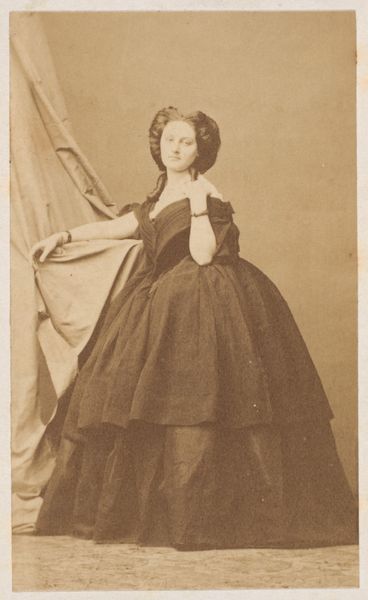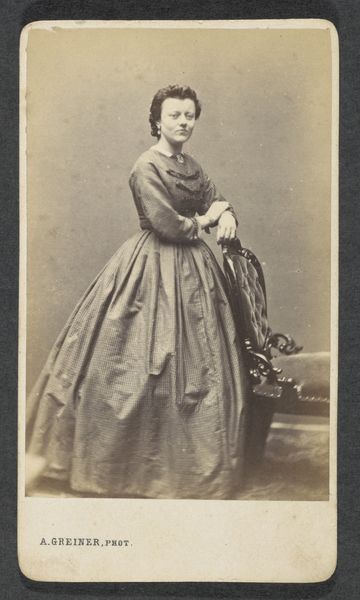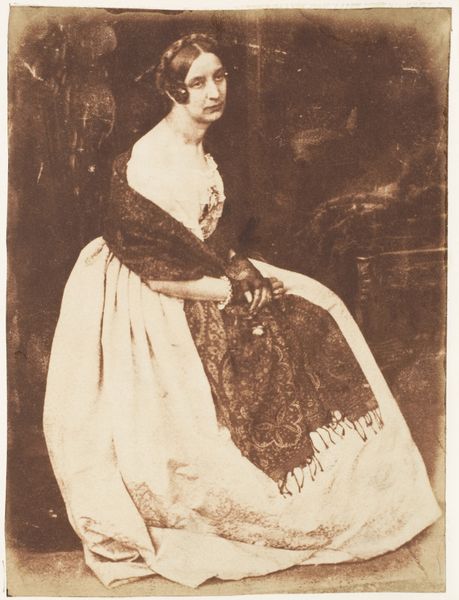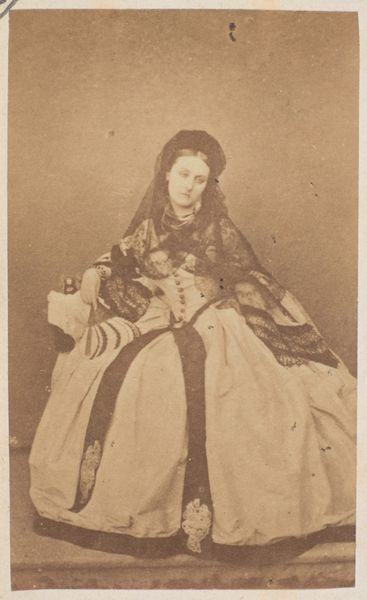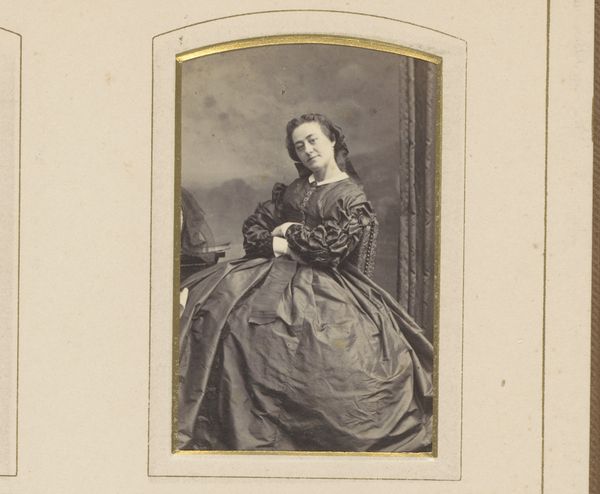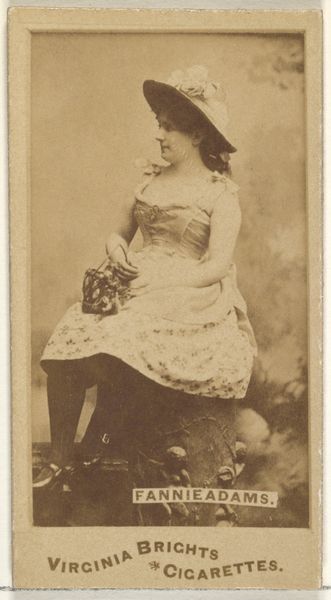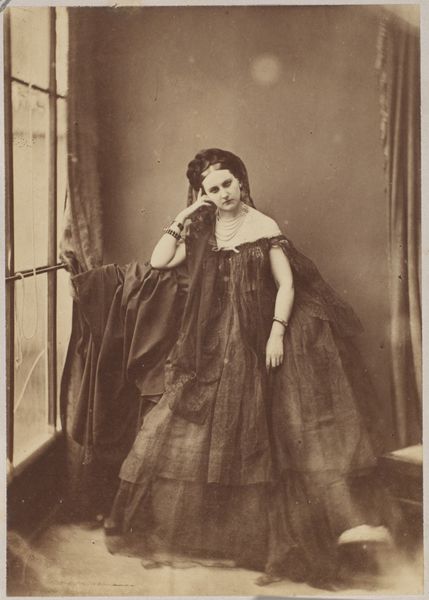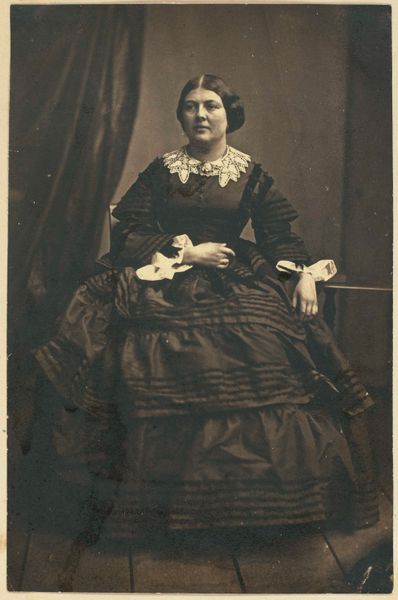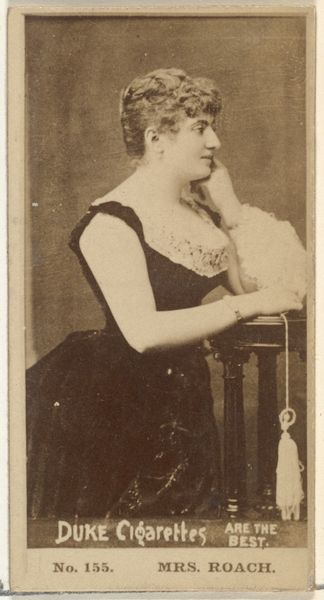
photography, gelatin-silver-print
#
portrait
#
archive photography
#
photography
#
historical photography
#
gelatin-silver-print
Dimensions: 5.1 x 8.6 cm. (2 x 3 3/8 in.)
Copyright: Public Domain
Curator: Let's take a look at "L'Interrogation," a gelatin silver print by Pierre-Louis Pierson, dating to the 1860s. It’s currently held at The Metropolitan Museum of Art. What’s your immediate reaction to it? Editor: There’s a real romanticism to it. She seems to be lost in thought or perhaps longing for something just out of reach. Her upward gaze is filled with longing, a hint of melancholy, and, well, the titular interrogation. The whole piece has an air of subdued drama about it. Curator: Absolutely, and contextually, Pierson occupied a peculiar position as the in-house photographer for Countess Castiglione. The Countess used photography as a means to craft and control her image, disseminating it through society, quite unprecedented for the time. Editor: Yes, and considering her status as a muse and her obsessive control over her image, one can't help but see the gaze as almost theatrical, meant for public consumption. The bare shoulder carries such visual weight; in older portraiture, it’s nearly always associated with an idealized Neoclassical style. What’s particularly interesting is the slight angling of the neck. There is an inherent vulnerability in her posture as well, perhaps even inviting intimacy. Curator: But it's important to understand the Countess's ambitions. These were not just vanity projects. They were deliberate exercises of power, shaping her narrative within the strictures of Second Empire society. Photography offered her a means to circumvent the male gaze as mediated through painting and the established Salon system. She curated her presentation to a T. Editor: That’s fair. It strikes me that we also have the power of costuming to consider. The voluminous dress overwhelms her frame. Is that a sign of modesty or opulence? Does the weight of her finery hold significance beyond simply marking wealth and social standing? Curator: Good questions! Think of it less as inherent modesty, and more about the calculated display of status and artistry. Fashion was a powerful tool for the Countess. The scale of her dresses became an emblem of her self-fashioned grandeur. Editor: The symbolism layered into dress is really significant here; she's controlling every aspect of how she is seen. I appreciate your emphasis on the artist using these elements to wield her own sense of power. Curator: Indeed. By delving into the historical context, we can move beyond seeing the photo as just another portrait, and grasp it as a critical piece of visual politics. Editor: Precisely, which enriches my view of it significantly. Now, I see much more intentionality, it deepens the symbolism in that slight turn of the neck and placement of her hands.
Comments
No comments
Be the first to comment and join the conversation on the ultimate creative platform.
